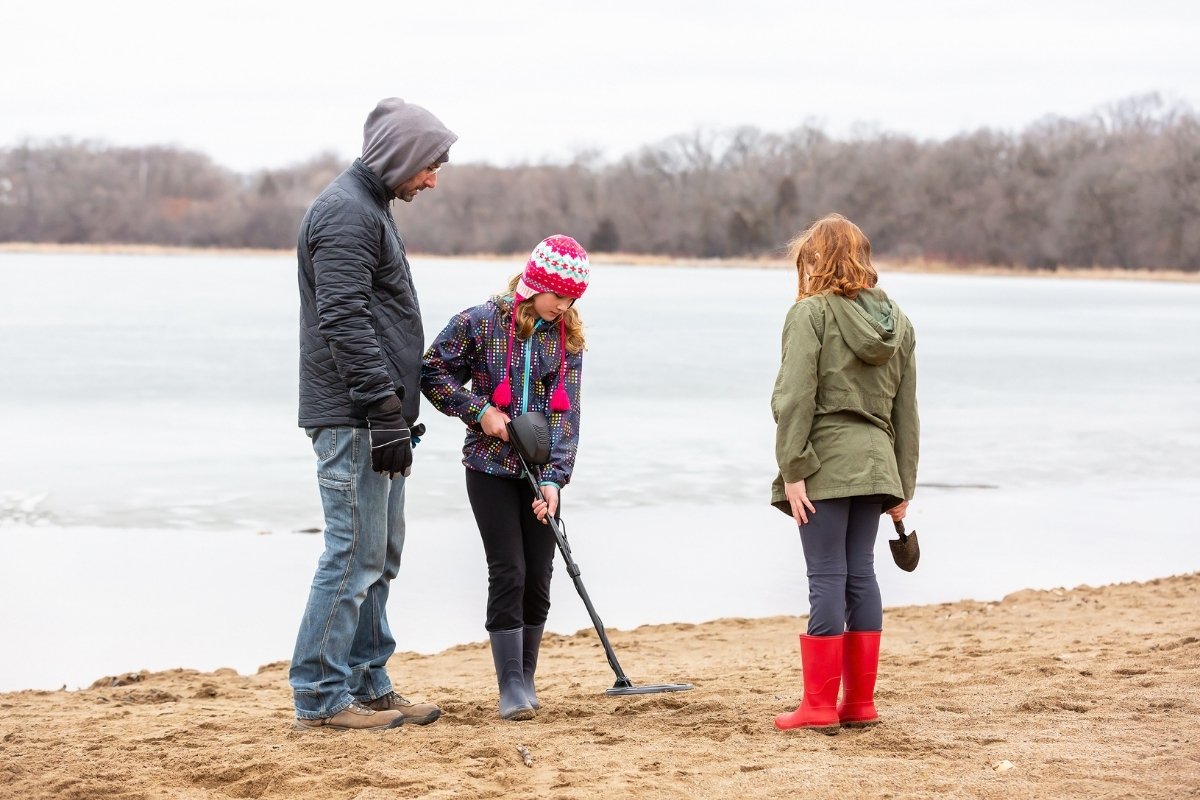The day I got my first metal detector I didn’t really know how to use it, where I could use it, or what types of things I would find. After a few weeks of researching and testing my machine, I was ready to take on the world!
First, you will need to test out the different settings with a few test targets on your own property. To use your machine, swing the coil back and forth over the ground until you get a signal. Then, using a shovel or garden tool, dig a circular plug and fold it over. Look for the target and remove it from the ground and place the plug back into the hole.
After you have assembled the metal detector and tested it on a few test targets, you will need to find out where it is legal to metal detect in your local area.
Let’s take a closer look at how to use a metal detector, how to research local laws to find out if you can metal detect in public places in your area, and how to get permission to metal detect on private property.
What are the Rules for Metal Detecting
The rules of metal detecting are pretty simple. Follow a few best practices and do your research and you shouldn’t have much trouble. Here are some of the basic rules and best practices of metal detecting.
Always research if metal detecting is legal in your area. If you are wanting to metal detect on public property, first, you need to make sure that it is allowed in your area or the area where you plan on hunting. Some cities and state parks require a permit. Source.
Never metal detect on private property without permission. Private property can be some of the best places to metal detect, however, you need to get full permission to metal detect there beforehand. You can knock on doors or write the owner of a piece of land to get formal permission.
When you dig a hole make sure to replace the plug and make it pretty. When you dig a plug to find your target, you are tearing up the ground, so it’s a best practice to cut a circular shape and after you find your target, put the plug back into the hole and pack it down with your feet.
Always throw away the trash you find, never leave it. If you are digging up pull tabs and random pieces of junk metal, then make sure you put them into a trashcan, or a container to take home and dispose of. This is a best practice and part of metal detecting etiquette.
As long as you follow best practices, you will be well on your way to finding awesome treasures. The British Museum in the UK has reported that 96% of treasures found were found by metal detectors! Source.
How to Use a Metal Detector Step by Step With Pics
When I first started metal detecting, I pretty much had no idea what I was doing. Now that I am an experienced treasure hunter, I have put together this step-by-step guide for how to use a metal detector. Check out our article for how to metal detectors work here.
Step 1
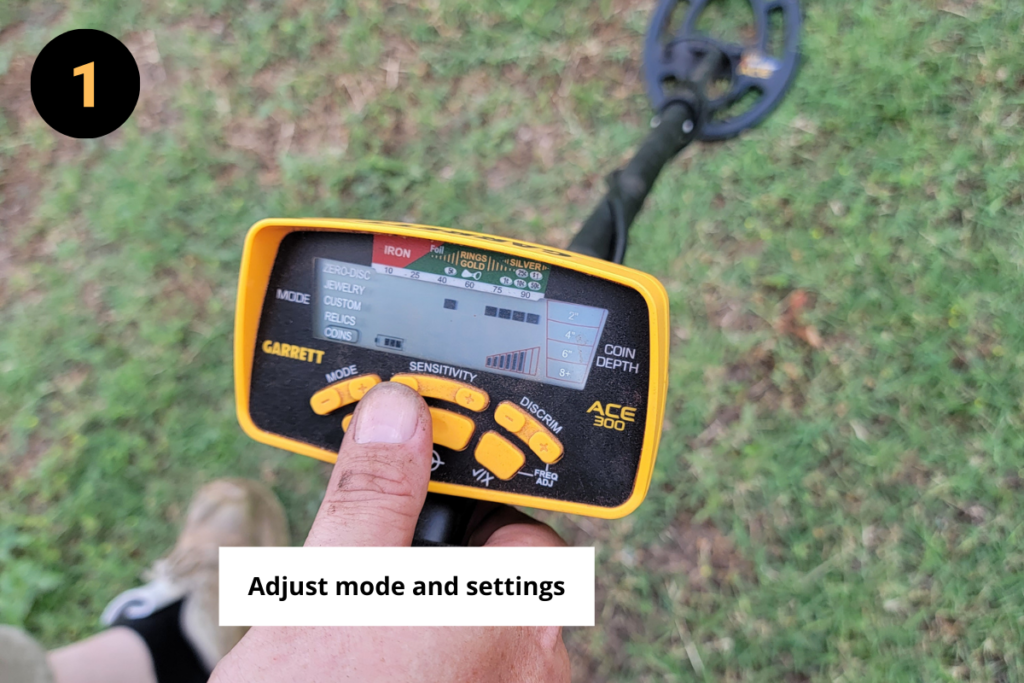
Turn on your machine and change it to the settings that you prefer. If your machine has different modes you may want to change it to something like coin mode, or relic mode.
Step 2
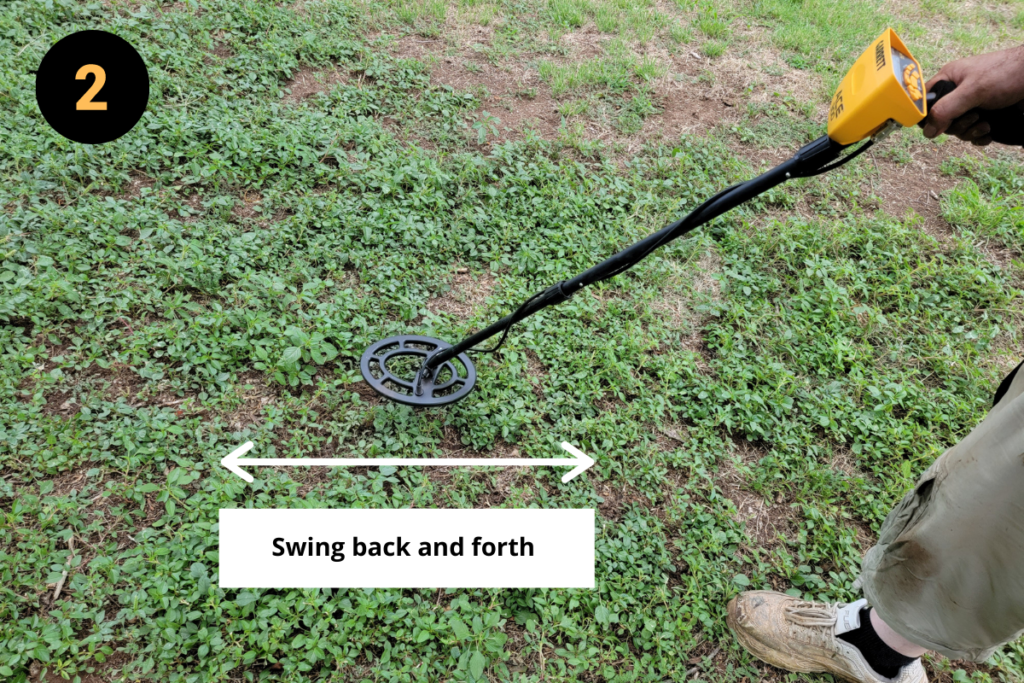
Keep the coil of the metal detector about half an inch from the ground. Swing the coil back and forth with wide swings, keeping the coil level to the ground. Swinging it wide will get you more coverage.
Step 3
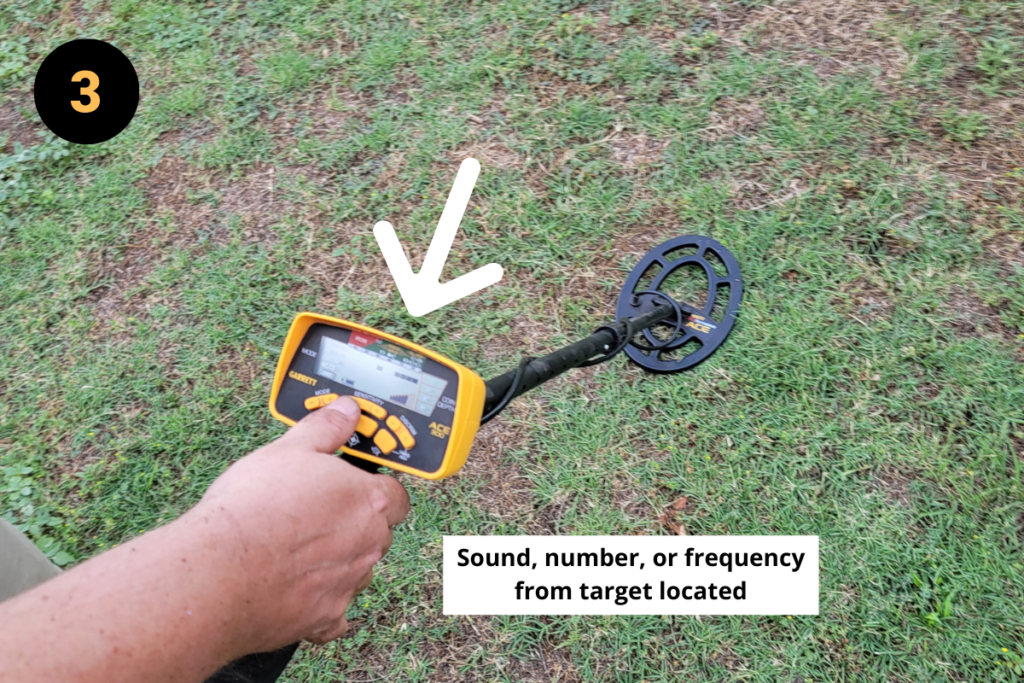
You will know that you have located a target by the sound, blinking light, or frequency number. Different machines have different sounds, frequencies, and ways to know if you have located a target.
Step 4
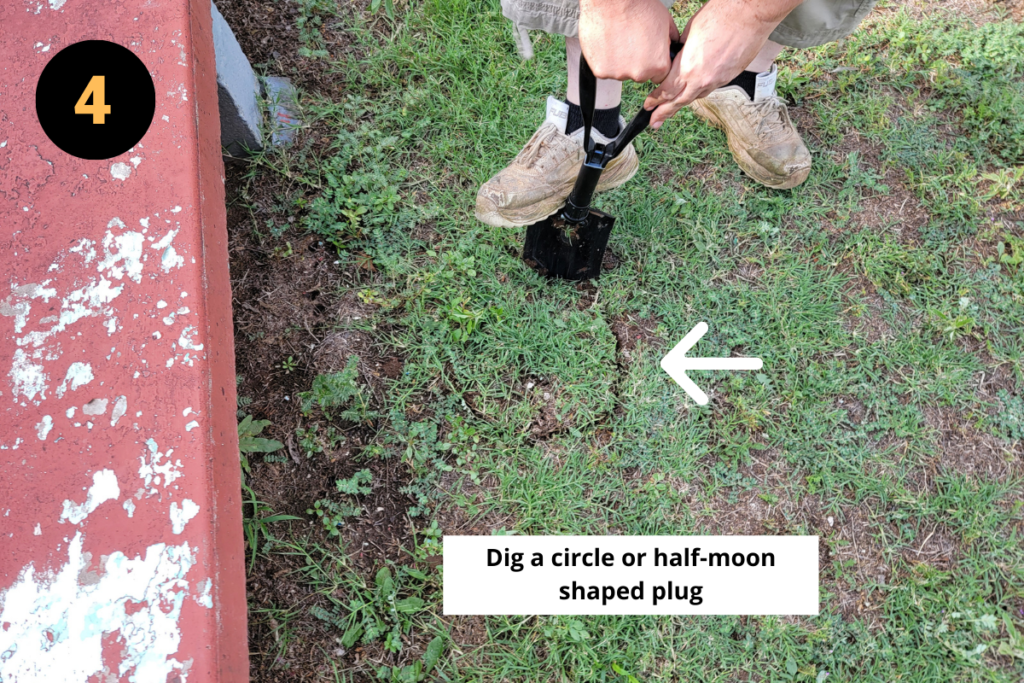
Once you have located your target, you will want to use a shovel or digging tool to cut a circle or half-moon around the target area. This is called a plug. Once you have dug it out, fold the grass or dirt over, so you can replace the plug after you are done.
Step 5
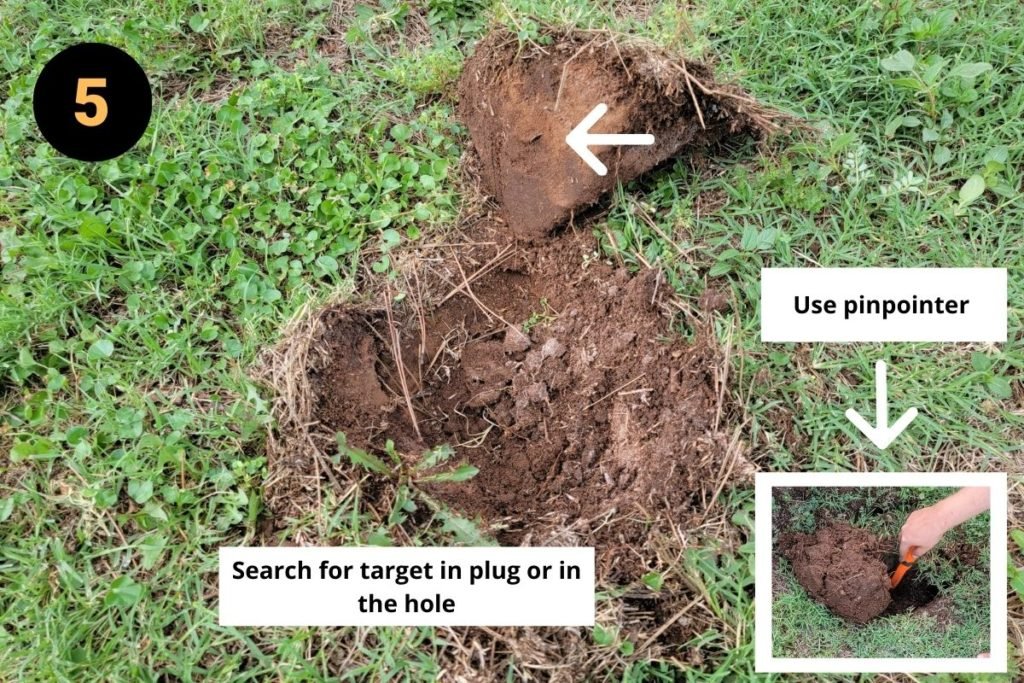
Search for your target in the hole and the plug. You may need to use a pinpointer to find the exact location of the target. You may also have to dig deeper to get to the target. You can swipe the machine across the plug to see if the target is in the plug itself.
Step 6
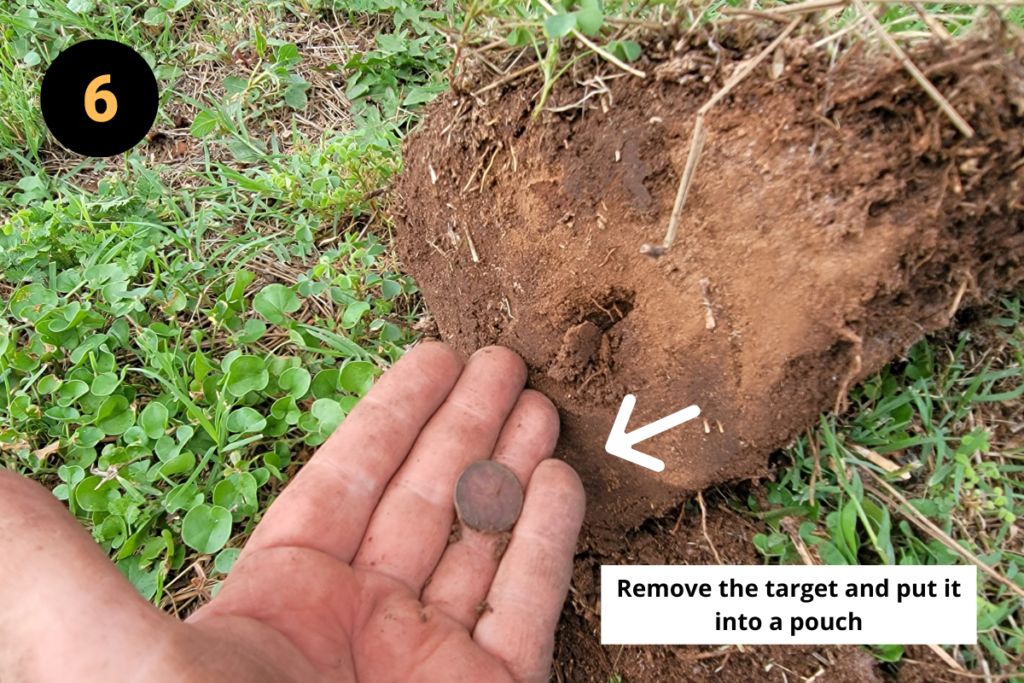
Remove the target. It may be a coin, a piece of jewelry, a relic, or just a piece of junk metal. Put your target in a pouch or pocket, and if it is trash then make sure you keep it, to throw it away.
Step 7
Fold the plug back into the original hole. Make sure that you get it in there, nice and tight. After this, tamp the plug down by stepping on it with your feet. Make sure it looks as good as possible.
And that is it. Now you can repeat this process for as many targets as you can find in that area. You may want to use a grid system, where you hunt one section at a time, this can help make sure you don’t miss anything.
What is a Good Metal Detector for Starting Out?
For a beginner, who is just starting out with metal detecting, I suggest getting a midgrade metal detector. This is a metal detector that has easy-to-use settings, that’s lightweight, and is fairly inexpensive. A midgrade metal detector will cost around $250.
If you are getting a metal detector for a child, then you may want to go with a cheap model. These metal detectors may not have all the bells and whistles of a midgrade or high-grade machine, but they still get the job done. A cheap metal detector will cost around $100.
For those who already know that this is going to be a lifelong hobby, you may consider getting a high-grade machine. These have better settings, with more options for tuning in your machine. A good metal detector costs around $600-$800, but these machines can go as high as $3,000.
Basic Metal Detector Settings
The basic settings on a metal detector include different modes, such as coin mode, relic mode, and custom mode. You will also have settings for discrimination and sensitivity. The better the machine, the more settings you will have to tune it in.
Metal detector sensitivity, lets you turn the sensitivity up and down, which allows your machine to pick up more of a signal, this can be good if you are looking for something smaller. If the higher sensitivity is picking up too much of something that is trash, you may want to turn it down.
Discrimination allows you to set your machine so that it will not pick up certain items, such as pull-tabs, nails, and other trash. You can set your discrimination by running your machine across pull tabs or nails, and then changing the discrimination until it does not pick it up. However, this may also cause your machine to miss other valuable items that come up with the same signal.
Tips on Metal Detecting for Beginners
I have been metal detecting for a couple of years now and I’ve got some tips that should help a beginner learn the ropes a little faster.
Tip 1 – The more research you do, the more chances you will find something really valuable. You can research houses to find out what year they were built, and use historical maps to find areas where there were old settlements.
Tip 2 – You won’t always find everything on the first day. Consider returning to a spot multiple times to find more things, and to cover ground that you may have missed the first time.
Tip 3 – Have the right gear for the job. Besides a metal detector, you should have a few other items. I suggest getting a pouch that connects to your belt to hold the items that you find. Also, a pinpointer can help tremendously.
Metal detecting gear:
- Pinpointer
- Shovel
- Garden digging tool
- Utility belt with pouch
- Bucket for trash
A pinpointer is a small handheld detector that pinpoints the exact location of the target within a hole. Consider having a shovel as well as a small garden digging tool, this will help you cut different size plugs.
I always carry a bucket with me, to throw the junk and trash away. It looks good when others see you disposing of the trash you find and a bucket makes it easy to collect and carry away.
Want to learn more about metal detecting accessories? Check out Metal Detecting Tools and Accessories
Where is the Best Place to Metal Detect?
The best places to metal detect, are old homes from the 40s and 50s. You will need to get permission to hunt these types of houses. Older public parks, houses, and playgrounds, usually yield silver coins and jewelry.
My most expensive finds have come from swimming beaches. Beaches are places where people lose things over and over again. These are sites that replenish themselves constantly. You can hit up a beach 2-3 times per year.
Today is the only life you are sure of. Make the most of today. Get interested in something. Shake yourself awake. Develop a hobby. Let the winds of enthusiasm sweep through you. Live today with gusto.
Dale Carnegie

